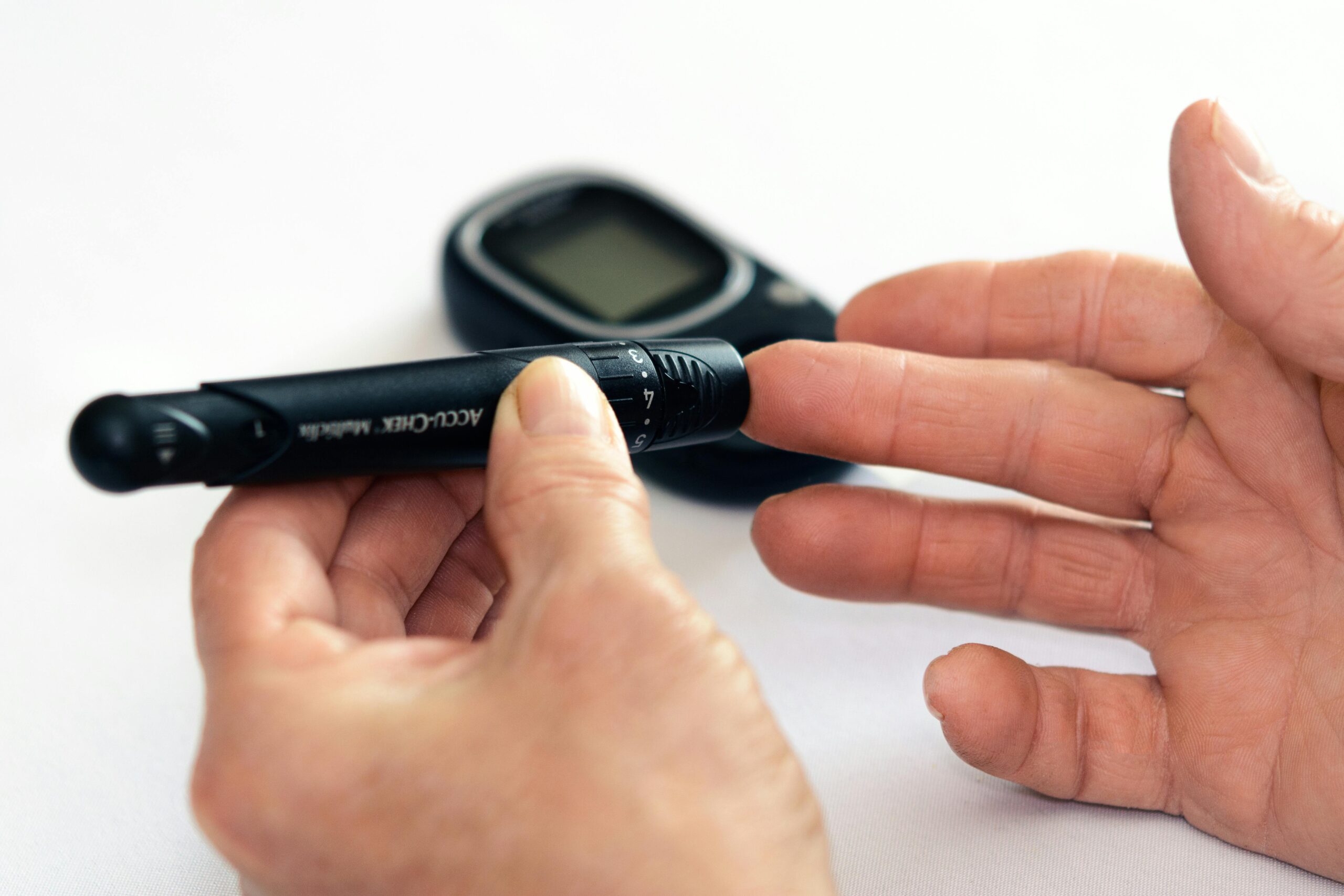Who can benefit from this wearable technology?
You may have noticed them in summer when the weather was warm enough for T-shirts: those square or round, somewhat three-dimensional patches on people’s upper arms (though they can be worn elsewhere). They’re too raised to be oestrogen or nicotine patches. So what are they? They’re continuous glucose monitors (CGMs), prescribed by physicians for people with diabetes to help them keep track of and control their blood sugar levels. As of this year, one of these monitors, the Stelo biosensor from Dexcom, became available in the US without a prescription, giving new users the chance to to improve their health by wearing one.
CGMs measure blood sugar, but they don’t actually require blood to do it. The patches cover tiny sensor wires that are inserted (painlessly) just under the skin to check glucose level in the intestinal fluid — the liquid that contains glucose and other substances leaked from blood capillaries. The CGM constantly monitors glucose levels and sends reports to a user’s smartphone or other device. These monitors have traditionally been prescribed to people with either type 1 or 2 diabetes who are insulin dependent. The monitor helps people adjust their insulin doses to keep their blood sugar close to normal range. Some of the monitors are even connected to insulin pumps that do the work automatically.
But doctors have long felt that people with type 2 diabetes who are not insulin dependent could also benefit from the information these monitors provide. Some doctors have been prescribing them for that use even though most health insurance policies will cover the cost only for people who use insulin.
The first over-the-counter CGM, the Stelo biosensor is specifically recommended for adults 18 and older with type 2 diabetes or prediabetes — when blood sugar is higher than normal but not yet high enough to be diagnosed as diabetes — who do not use insulin.
“The monitor can give these people new insights into what they’re eating. They’ll see how activity benefits their glucose levels. Their hemoglobin A1C will come down. They’ll become more confident, and their quality of life will improve.”
In India, CGMs have been available since 2015 and there appears to be an upward trend in the demand for such devices. In fact, global demand for t hem is anticipated to expand at 10.6 per cent by the year 2034.
Easy access to CGMs could prove to be a boon for Indians, what with the country’s extraordinarily high burden of the disease. A 2023 cross-sectional, population-based survey by the Indian Council of Medical Research and India Diabetes found that 10.1 crore individuals — roughly 11.4 per cent of the population — have diabetes. A survey commissioned by the health ministry also found that around 136 million people could be living with prediabetes, which has a 60 per cent chance of conversion within five years.
Despite the pressing need, however, CGM price tags, at present, range anywhere between Rs 5,000 and Rs 40,000 or higher. The Dexcom Stelo’s for example is $99 (around Rs 8,300) per month, or $ 89 (Rs 7,500) with a subscription plan and is, as of now, available through the company’s official website. Another example — Medtronic’s CGM, which comes with a sensor and transmitter linked to an insulin pump, is priced at Rs 40,000 for just the transmitter.
Also, because making CGMs available over the counter is so new, there’s little data yet to confirm the benefits for other groups of people. But there’s hope that the monitors will be beneficial for non-diabetics as well, including people taking medications that can raise blood sugar, people who have a strong family history of diabetes and are worried about developing it themselves, and people with obesity who are at high risk of developing diabetes.
While the Stelo is the first monitor to be available over the counter, inevitably others will follow. And companies that make these monitors obviously have incentive to promote their use to other groups, such as healthy people without diabetes who want to check their blood sugar the way they might check their blood pressure, weigh themselves, or track their heart rate, calorie or steps.
Right now, though, there’s no evidence that you can ‘optimize’ your blood sugar for peak health or physical performance. And since normal sugar fluctuates during the day, someone could misread a temporarily low or high reading as dangerous.
“We don’t want people to misinterpret what really is normal and medicalize normal blood sugar fluctuations” who cautions that interpreting the monitor’s information should be done in conjunctions with a medical professional.





